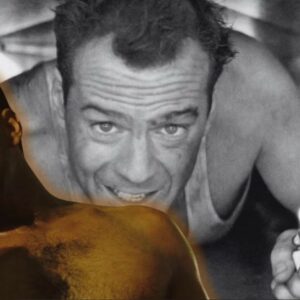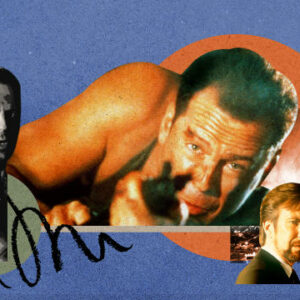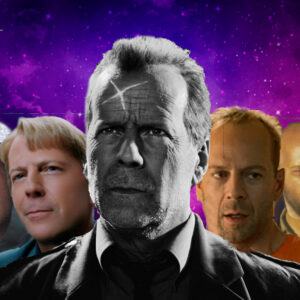Behind the Scenes: The Unique Challenges Brad Pitt Overcame in Once Upon a Time in Hollywood
Introduction
In Quentin Tarantino’s 2019 film, Once Upon a Time in Hollywood, Brad Pitt delivered a standout performance as Cliff Booth, a former stuntman navigating the shifting tides of 1969 Hollywood. While Pitt’s portrayal was widely praised, it came with its own set of unique challenges that added depth and authenticity to the character. This article explores the special hurdles Pitt faced in bringing Cliff Booth to life, from physical demands to emotional depth, and how he overcame them to deliver one of his most memorable performances.
1. Embracing the Era: Immersing in the 1960s Hollywood
The first major challenge for Brad Pitt was immersing himself in the 1960s Hollywood milieu. Tarantino’s film is a nostalgic ode to an era of filmmaking that was both glamorous and gritty. To authentically capture the essence of this period, Pitt had to delve deep into the cultural and social landscape of the time.
- Research and Authenticity: Pitt’s commitment to authenticity required extensive research. He studied the era’s film industry, fashion, and societal attitudes. This included watching films from the late 1960s, reading books, and even speaking with individuals who had firsthand experience of that time.
- Costume and Hair: The era’s distinctive style was crucial to depicting Cliff Booth’s character. Pitt worked closely with costume designers and hairstylists to perfect the look. His wardrobe and hairstyle were not just about appearance but also about embodying the spirit of the time.
2. The Physical Demands: Stunt Work and Fitness
Cliff Booth’s role as a stuntman meant that Pitt had to undergo significant physical preparation. His character’s profession is a central aspect of the film, requiring Pitt to perform various physical feats that tested his endurance and skill.
- Training and Preparation: Pitt dedicated months to training for the physical aspects of his role. This involved working with professional stunt coordinators to learn and rehearse stunts that were both demanding and dangerous. His training regime included martial arts, fight choreography, and precision driving.
- Risk and Safety: Despite the rigorous safety measures, performing stunts always carries inherent risks. Pitt had to balance the desire to achieve authenticity with the need to ensure his safety. This often meant making critical decisions about which stunts to perform himself and which to leave to professionals.
3. Emotional Depth: Developing Cliff Booth’s Character
Beyond the physical challenges, portraying Cliff Booth required Pitt to delve into the emotional and psychological complexities of the character. Cliff is a multifaceted individual with a rich backstory, and Pitt had to explore these depths to bring him to life.
- Character Backstory: To understand Cliff Booth fully, Pitt explored his backstory and relationships. This included delving into his past as a stuntman and his friendship with Rick Dalton (played by Leonardo DiCaprio). Pitt worked to understand the nuances of Cliff’s personality, his motivations, and his emotional struggles.
- Chemistry with Co-stars: Building a believable relationship with Leonardo DiCaprio’s Rick Dalton was essential. Pitt and DiCaprio’s on-screen chemistry was a crucial aspect of the film’s success. They spent time together off-screen to develop their dynamic, ensuring it translated effectively to their performances.
4. The Role of Dialogue: Tarantino’s Script and Delivery
Quentin Tarantino is known for his unique dialogue style, which is both rhythmic and intricate. For Brad Pitt, delivering Tarantino’s dialogue required not just memorization but also an understanding of its rhythm and subtext.
- Dialogue Mastery: Tarantino’s scripts are famous for their complex dialogue, which often includes layers of meaning and subtext. Pitt had to master this dialogue, ensuring that his delivery was natural while also capturing the essence of Tarantino’s writing.
- Improvisation and Flexibility: Tarantino often encourages improvisation, adding another layer of complexity to the role. Pitt had to be flexible and open to adapting his performance based on Tarantino’s direction and the evolving needs of the scene.
5. Navigating the Film’s Meta-Nature: Real vs. Fiction
Once Upon a Time in Hollywood operates on multiple levels, blending real historical events with fictional elements. Brad Pitt’s role required him to navigate this meta-nature, balancing the film’s historical references with its fictional narrative.
- Historical Accuracy vs. Fictional Narrative: Pitt had to be aware of the historical context of the film while remaining true to the fictional aspects of his character. This required a nuanced understanding of both the real events and the fictional elements crafted by Tarantino.
- Portraying Realism in Fiction: The challenge was to bring authenticity to a character that exists in a fictionalized version of real Hollywood. Pitt had to ensure that Cliff Booth felt genuine and relatable, even within the stylized framework of Tarantino’s narrative.
6. Working with Tarantino: Directorial Challenges and Collaborations
Tarantino’s directorial style is both distinctive and demanding. For Pitt, collaborating with such a visionary director came with its own set of challenges and opportunities.
- Understanding Tarantino’s Vision: Tarantino’s films are known for their distinctive style and thematic depth. Pitt had to fully understand and align with Tarantino’s vision for Once Upon a Time in Hollywood. This involved interpreting Tarantino’s direction and translating it into a performance that met his high standards.
- Collaboration and Flexibility: Tarantino often changes elements during filming, requiring actors to be adaptable. Pitt had to remain flexible and responsive to Tarantino’s evolving vision, which sometimes meant reworking scenes or adjusting his performance on the fly.
7. Balancing Stardom and Craft: Pitt’s Approach to the Role
As a high-profile actor, balancing the demands of stardom with the craft of acting is a continuous challenge. For Brad Pitt, portraying Cliff Booth required a careful balance of public perception and artistic integrity.
- Avoiding Typecasting: Pitt had to navigate the potential pitfalls of being typecast. Cliff Booth was a departure from some of his previous roles, and Pitt needed to ensure that his performance stood out without falling into familiar patterns.
- Maintaining Privacy: Balancing his public persona with his role in the film was also a challenge. Pitt had to manage his public image while delving deeply into a character that required vulnerability and authenticity.
8. The Impact of Cliff Booth: Legacy and Reception
The impact of Brad Pitt’s portrayal of Cliff Booth extends beyond the film itself. His performance has been widely acclaimed and has contributed to his legacy as an actor.
- Critical Acclaim: Pitt’s performance received numerous accolades, including the Academy Award for Best Supporting Actor. His portrayal of Cliff Booth was praised for its depth, authenticity, and complexity.
- Cultural Impact: The role of Cliff Booth has become iconic, reflecting both the film’s nostalgic look at Hollywood and Pitt’s own career. The character has resonated with audiences, adding to Pitt’s legacy as one of the leading actors of his generation.
Conclusion
Brad Pitt’s portrayal of Cliff Booth in Once Upon a Time in Hollywood was marked by a series of unique challenges that tested his skills and dedication. From immersing himself in the 1960s Hollywood setting to overcoming physical and emotional hurdles, Pitt’s performance was a testament to his craft and commitment. His ability to navigate the complexities of Tarantino’s script, the physical demands of the role, and the balance of his public persona with his artistic integrity highlights the remarkable effort behind the scenes. As a result, Pitt’s performance not only enhanced the film but also cemented his place as one of the most versatile and talented actors of his generation.





